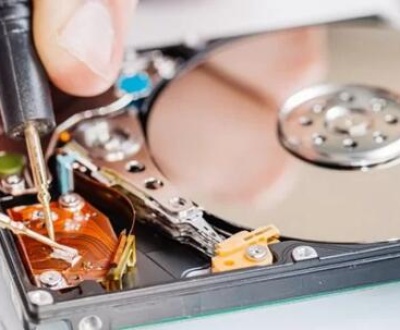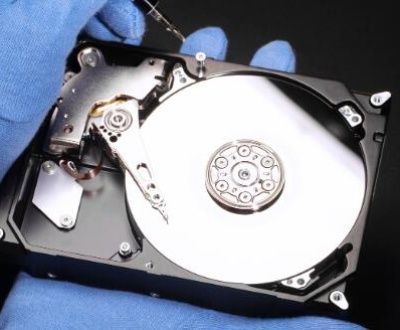Recovering deleted pictures can be a complex process, depending on several factors such as the storage device, the method used, and the condition of the data. The time it takes to recover deleted pictures can range from minutes to hours or even days.
1. Types of Storage Devices and Their Impact on Recovery Time
The type of storage device plays a significant role in determining how long it takes to recover deleted pictures. There are several types of storage devices, each with its own recovery dynamics:
a. Hard Disk Drives (HDDs)
Hard drives are the most common storage devices for computers and laptops. Recovery from an HDD depends largely on the size of the drive, the fragmentation of the data, and how recently the pictures were deleted. HDDs store data magnetically, and when a picture is deleted, the space it occupied is marked as “available” for new data to overwrite it. However, until the space is overwritten, the data remains recoverable.
If the deletion is recent and no further data has been written to the drive, recovery can be swift, often taking a few hours for standard operations. Specialized data recovery software can scan the drive quickly, locate the deleted files, and reconstruct them in a matter of minutes if the drive isn’t large (say, 500 GB to 1 TB). However, for larger drives (over 2 TB), this process could take several hours.

b. Solid-State Drives (SSDs)
SSDs differ from HDDs because they store data electronically using flash memory, which makes recovery more complex. Many SSDs have a feature called TRIM, which immediately wipes data from the drive when a file is deleted. This makes the recovery of deleted pictures much harder, as the deleted data is irretrievably erased from the drive’s blocks almost instantly.
If TRIM is disabled or the SSD does not support this feature, recovery can take a similar amount of time as on an HDD. A 500 GB SSD might take 1-3 hours for a full scan, while larger drives may extend the process. However, if TRIM is active, recovery may not be possible at all, and no time would be sufficient to recover the data.
c. USB Flash Drives and Memory Cards
USB drives and memory cards, like those used in cameras and smartphones, also use flash memory to store data. Recovery times for these devices vary depending on their size and the extent of data deletion. For instance, a 32 GB memory card may take as little as 10-15 minutes to scan and recover deleted pictures, whereas a 128 GB flash drive might take an hour or more.
One unique challenge with flash memory is wear-leveling algorithms, which can make it harder to recover data if the device has been used extensively, but if the deletion is recent, recovery can be relatively quick.
d. Mobile Phones
Smartphones generally use internal flash memory, and recovering deleted pictures from them can be tricky. If the images were deleted from an SD card inserted into the phone, they can be recovered with standard software in a few minutes to a few hours, depending on the card size. However, if they were deleted from the phone’s internal memory, the process could take longer, especially if the phone is not rooted (for Android) or jailbroken (for iPhone). Rooting/jailbreaking adds time to the process, but once it’s done, scanning and recovery can proceed at a normal rate.
2. Factors Affecting Recovery Time
There are several factors that influence how long it takes to recover deleted pictures:
a. Size of the Drive or Storage Medium
A larger drive will take more time to scan. For instance, a 500 GB HDD might take 1-3 hours to scan, whereas a 4 TB drive could take an entire day depending on the software used and the hardware specifications of the computer performing the recovery.
b. Extent of Data Deletion
If only a few pictures were deleted, recovery can be quite fast, as most recovery software is designed to sift through large amounts of data efficiently. However, if a significant amount of data has been deleted, or if the pictures are scattered across the drive due to fragmentation, recovery could take much longer.
c. Condition of the Storage Device
If the storage device is damaged or corrupted, the recovery process could be much slower. Specialized recovery software is needed to handle damaged or failing drives, and these programs might need to perform multiple scans or use deeper recovery methods, all of which add to the time required.
d. The Method Used for Deletion
How the pictures were deleted also affects recovery time. If they were simply deleted and moved to the Recycle Bin (or equivalent), recovery can be extremely fast—often just a matter of minutes to restore the files. However, if the Recycle Bin has been emptied or the pictures were deleted via a “shift+delete” command, the data will be harder to recover, and a full scan will be necessary, which can take hours.
3. The Recovery Process
Now, let’s walk through a typical recovery process, which can vary depending on the tools used and the complexity of the case.
a. Initial Diagnosis
The first step in recovering deleted pictures is diagnosing the state of the drive or storage device. If the drive is functioning properly and no new data has been written over the deleted pictures, the chances of recovery are high. Most recovery tools start with a quick scan, which takes minutes to perform and provides an overview of recoverable files.
b. Deep Scanning
If the initial scan doesn’t reveal the deleted pictures, a deep scan will be necessary. This type of scan combs through the storage device sector by sector, searching for data remnants that can be pieced together into the original files. While this method is effective, it is significantly slower. Depending on the size of the drive, a deep scan could take several hours to complete.
For a standard 1 TB HDD, a deep scan may take anywhere from 2-8 hours, depending on factors such as fragmentation and the overall health of the drive. SSDs, due to their higher speed, might perform deep scans faster, but again, the presence of TRIM can nullify this advantage by making the deleted files unrecoverable in the first place.
c. Reconstruction of Files
Once the deleted pictures are located, the software needs to reconstruct the data into usable files. This can be instantaneous for most files, but in cases where the pictures were heavily fragmented or partially overwritten, the process could take longer, or the resulting images could be corrupted or incomplete. In such cases, manual intervention by a data recovery expert may be required, which can add significantly to the recovery time.
4. DIY Recovery vs. Professional Recovery Services
a. Using Data Recovery Software
If you’re using software tools to recover deleted pictures, the process is generally faster but limited by the tool’s capabilities. Many recovery software programs, such as Recuva, Stellar Data Recovery, and Panda Assistant, can perform a quick scan and recovery in less than an hour for a typical 500 GB drive. Deep scans, as discussed earlier, can take several hours but are more thorough.
b. Professional Recovery Services
In cases where the storage device is damaged, or the recovery software cannot locate the pictures, you might need to turn to professional data recovery services. These services have specialized tools and expertise to recover data from corrupted or physically damaged drives. However, the trade-off is time and cost.
Professional services typically take 3-5 business days to complete recovery, although expedited services may reduce this time to 24-48 hours. For severely damaged drives, the process could take weeks, as the data might need to be manually extracted from the platters or chips in a cleanroom environment.
5. Steps to Prevent Overwriting and Speed Up Recovery
Once you realize pictures have been deleted, the key to ensuring a faster and more successful recovery is to stop using the storage device immediately. Any new data written to the device could overwrite the deleted pictures, making them unrecoverable.
If the storage device is an HDD or SSD, disconnecting it from the computer or ceasing all writes to it will increase the likelihood of a successful recovery. The same applies to USB drives and memory cards. For mobile phones, it is important to stop taking new pictures or downloading apps until the recovery process is complete.
While data recovery software can often retrieve deleted pictures quickly, deep scans or more complex recoveries will take significantly longer. If the data is highly valuable, professional services offer the best chance of success, though they will require more time and investment.
About us and this blog
Panda Assistant is built on the latest data recovery algorithms, ensuring that no file is too damaged, too lost, or too corrupted to be recovered.
Request a free quote
We believe that data recovery shouldn’t be a daunting task. That’s why we’ve designed Panda Assistant to be as easy to use as it is powerful. With a few clicks, you can initiate a scan, preview recoverable files, and restore your data all within a matter of minutes.
Subscribe to our newsletter!
More from our blog
See all postsRecent Posts
- Data recovery salt lake city utah 2025-04-18
- Data recovery sacramento 2025-04-18
- Data recovery miami 2025-04-18

 Try lt Free
Try lt Free Recovery success rate of up to
Recovery success rate of up to









